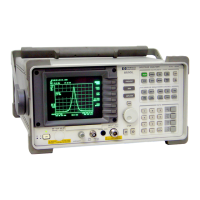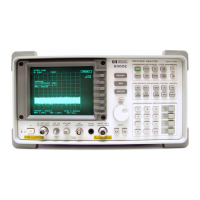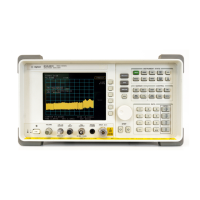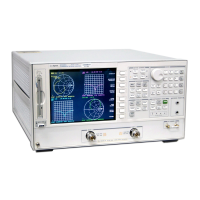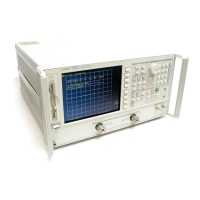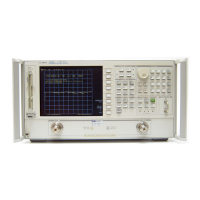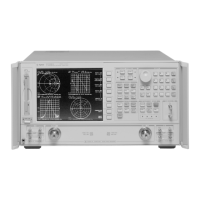Parameter interactions
Changing one parameter may necessitate changes in other parameters to achieve
the desired measurement. The following topics may help you optimize your
measurements and explain the reasons for changes made automatically by the
analyzer.
Data size considerations
The value of [main length] determines the amount of data, in slots, that the analyzer
acquires. The value of [max time pts]
++
det ermines the maximum data size for IQ
measured and IQ reference data, and can be set from 256 to 4096 points.
Tip Even with max time pts set to 4096 time points, there are signals that contain more
data than you can view at one time (for example, if the signal is composite time or
IQ measured or IQ reference for higher symbol rates). For these signals, turn on
time gating and view the measurement data in slices.
Resolution bandwidth
Resolution bandwidth in W-CDMA is determined automatically by the analyzer, and
cannot be set independently. Resolution bandwidth is determined by the time
record length in the same manner as in Vector mode (see Fundamental
Measurement Interactions):
RBW = WBW ⁄ T
where RBW = resolution bandwidth
T = time record length
WBW = window bandwidth
In Wideband CDMA, the time record length is determined as follows:
T ≈ Result Length (in symbols)⁄Symbol Rate
Points Per Symbol
All W-CDMA measurement data, except composite time, is displayed at 1
point-per-symbol. Composite time is displayed at 16 points-per-symbol.
Wideband CDMA Concepts (Options B73, B79, and 080)
24 - 15
++ See [
max time points
] under [
System Utility
], [
memory usage
], [
configure meas memory
]
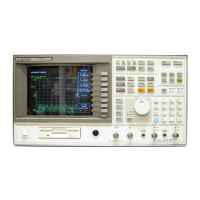
